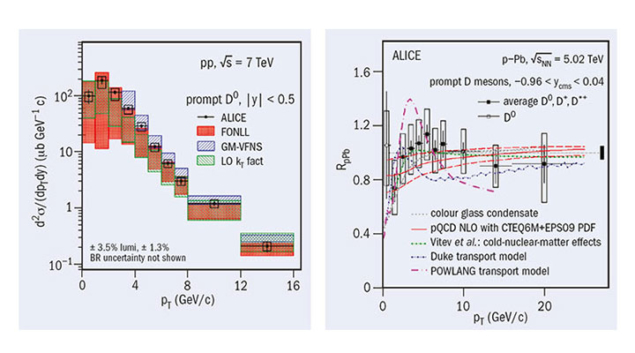

Measuring the production cross-section of charm hadrons in proton–proton collisions provides an important test of perturbative quantum chromodynamics (QCD). In proton–nucleus collisions, “cold-matter” effects related to the presence of nuclei in the colliding system are expected to modify the production cross-section and the transverse-momentum distribution of open-charm hadrons. Assessing such effects is thus crucial for interpreting the results from heavy-ion collisions, where a hot and dense medium of deconfined partons – the quark–gluon plasma (QGP) – is formed.
Previously, ALICE measured D-meson production in proton–lead collisions and found no substantial modification relative to proton–proton interactions within the kinematic range of the measurement (covering a transverse momentum, pT, between one and 24 GeV/c at mid-rapidity). Most cold-nuclear-matter effects are expected to modify charm production at low pT, but no measurement of D-meson production down to zero transverse momentum was performed at mid-rapidity at LHC energies.

Recently the ALICE collaboration extended the measurement of the D0-meson cross-section down to zero pT in proton–proton collisions at 7 TeV and in proton–lead collisions at 5.02 TeV. In contrast to previous ALICE publications, the analysis relied on estimating and subtracting the combinatorial background without having to reconstruct the D0 decay vertex. This allowed the first measurement of the D0 signal in the interval 0 < pT < 1 GeV/c and a significant reduction of the uncertainties in the interval 1 < pT < 2 GeV/c compared with previous results.
The current precision of the measurement does not yet confirm the role of the different nuclear effects or the possible presence of additional hot-medium effects. However, applied to larger data sets in the future, the analysis technique will provide insight into the physics-rich region close to pT = 0.





